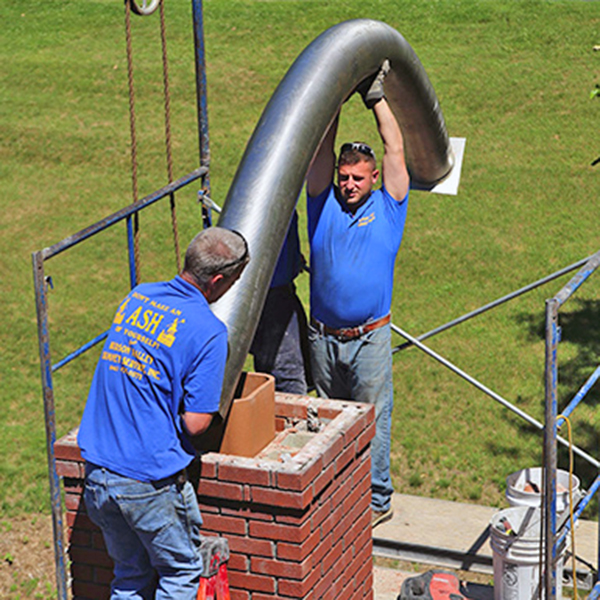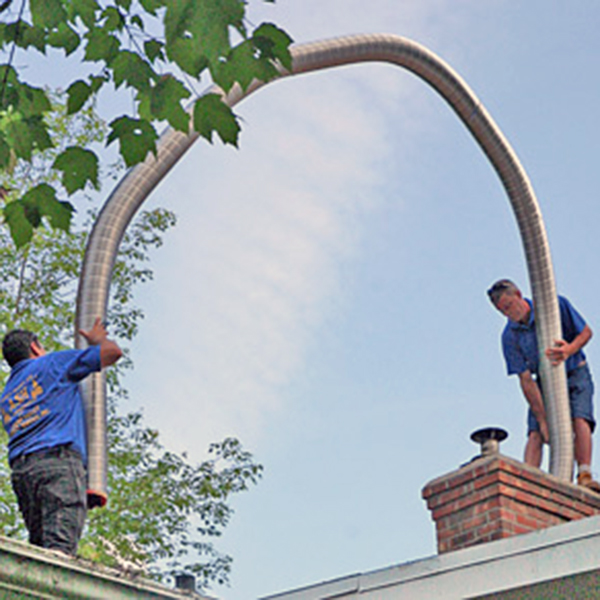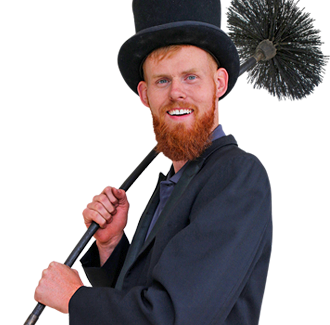Why Your Chimney Needs a Good Chimney Liner
Because chimney liners are built or installed within the flue, they’re not generally visible and therefore often overlooked when homeowners think about chimney maintenance and safety. Ignoring your chimney liner, however, could lead to big trouble. Here’s what you need to know about these critical components.
The purpose of chimney liners
 Depending on where you live, it’s likely your local fire-safety code mandates that chimneys connected to wood-burning fireplaces have liners. This is in your best interests because chimney liners perform several necessary jobs:
Depending on where you live, it’s likely your local fire-safety code mandates that chimneys connected to wood-burning fireplaces have liners. This is in your best interests because chimney liners perform several necessary jobs:
Protect the home: A well-lined chimney creates a barrier to prevent the transfer of heat to combustible materials of your home near the chimney. Tests have shown that unlined chimneys can cause adjacent woodwork to catch fire in just three and a half hours.
Protect the masonry: Acidic flue gases that form when wood is burned are corrosive to bricks and mortar and can eventually deteriorate a chimney’s masonry. When this happens, adjacent combustibles are at risk of fire, and people in the home are at risk of poisoning from carbon monoxide if it leaks into living areas.
Allow for optimal efficiency: Chimney liners provide the correct flue size to draft your specific wood-burning appliance. Proper drafting is important for efficiently removing smoke from the fireplace as well as reducing creosote buildup and making fires to burn hotter and with less smoke.
The value of a chimney liner inspection
Because you can’t see the condition of your chimney liner, it’s smart to have it professionally inspected once a year. Chimney inspectors who are certified through the Chimney Safety Institute of America have the training and expertise to closely examine your flue liner to detect early signs of damage and make repairs before a serious problem occurs. Chimney liner inspections often involve the use of video imaging equipment to see down into the flue and inspect not only for liner damage but also to assess the level of creosote buildup and other drafting obstructions that may be present.
Types of flue liners
 The most common materials for flue liners in the U.S. are stainless steel, clay tile and cast-in-place compounds. With regular use of your fireplace, any of these liner materials can eventually crack, break or become otherwise damaged. When a chimney liner is compromised, not only can it put the masonry of the chimney and building materials of the home at risk, its rough or broken areas can serve as collectors for flammable creosote, increasing the chance of a chimney fire.
The most common materials for flue liners in the U.S. are stainless steel, clay tile and cast-in-place compounds. With regular use of your fireplace, any of these liner materials can eventually crack, break or become otherwise damaged. When a chimney liner is compromised, not only can it put the masonry of the chimney and building materials of the home at risk, its rough or broken areas can serve as collectors for flammable creosote, increasing the chance of a chimney fire.
If your chimney inspector detects significant liner damage that warrants the installation of a new liner, he or she likely will recommend a stainless steel chimney liner because of its safety and durability. For minor damage issues, liners often can be repaired to restore soundness.
Better safe than sorry
The bottom line with all potential chimney issues is to err on the side of caution and schedule yearly inspections from a trained, certified professional. This is the only way for you to keep abreast of what’s happening with your chimney and be alerted to important repair concerns as they arise.
Hudson Valley Chimney of Poughkeepsie NY provides a full menu of chimney services including chimney inspection, chimney liner repair and installation, masonry work, chimney rebuilding and annual chimney sweeping. Keep your chimney and home safe by calling us today at (845) 471-1071.








